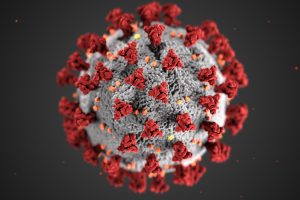The World Health Organization warned that the growing threat of resistance to HIV drugs could undermine global progress in treating the virus if countries do not take steps to address the problem.
In a survey of 11 countries in Africa, Asia and Latin America, six countries reported more than 10 percent of people beginning HIV retroviral treatment had a strain of the virus that was resistant to some of the most widely used medicines, the WHO said in a report released on Thursday, July 20.
The agency said some antiretroviral drug resistance is expected as use of the treatment increases, but “its prevalence in select countries has reached levels that necessitate a public health response.”
The UN has set a goal of 90 percent viral suppression among everyone receiving HIV anti-viral treatment by 2020.
But mathematical modeling cited by the WHO shows that an increase in drug resistance could lead to 135,000 people dying and another 105,000 becoming HIV positive in the next five years if no action is taken.
“We need to ensure that people who start treatment can stay on effective treatment, to prevent the emergence of HIV drug resistance,” Dr. Gottfried Hirnschall, Director of WHO’s HIV Department and Global Hepatitis Programme, said.
What is HIV drug resistance?
According to the World Health Organization:
The ability of HIV to mutate and reproduce itself in the presence of antiretroviral drugs is called resistance (HIVDR). The consequences of HIVDR include treatment failure and further spread of anti-viral drug resistant HIV. This can compromise the effectiveness of the limited therapeutic options to … further reduce HIV incidence, mortality, and morbidity.
Last year 19.5 million of the 36.7 million people worldwide living with HIV were receiving antiretroviral treatment, the WHO said. The treatment remains effective for most people in suppressing the virus.
HIV drug resistance is not only spreading, the agency said, but is higher in more recent country surveys. The year-to-year increases were greatest in eastern Africa and smallest in Asia.
HIV drug resistance is caused by a mutation in the virus’ structure that impacts the ability of a drug or combination of drugs to block the virus from replicating. The WHO noted that all current antiretroviral drugs, even new treatments, are at risk of becoming ineffective.
The WHO urged countries to review their HIV treatment programs as soon as the 10 percent “treatment failure” threshold has been reached, and issued new guidance to help address drug resistance.
Hirnschall said the agency recommends countries with over 10 percent HIV drug resistance switch to an alternative first-line therapy for people who are starting treatment.
Prior HIV treatment
The WHO survey data indicates six countries – Argentina, Guatemala, Namibia, Nicaragua, Uganda and Zimbabwe – have reached 10 percent resistance to antiretroviral drugs called Non-nucleoside reverse-transcriptase inhibitors (NNRTIs). People with NNRTI resistance are less likely to achieve viral suppression, more likely to end treatment and more likely to acquire new HIV mutations, the report said.
The first NNRTIs were approved by the US Federal Drug Administration in the mid-1990s and are used predominately in low and middle-income countries.
NNRTI resistance was significantly higher among people with prior antiretroviral drug exposure compared with people who were “ARV drug naive,” meaning they had no history of exposure to antiretrovirals.
The WHO said the high levels of antiretroviral drug resistance in people with prior exposure “are particularly concerning, as this group may represent a significant and ever-increasing proportion of first-line treatment indicators in some countries.”
People considered to have prior HIV drug exposure include women who have been given the drugs to prevent the transmission of HIV during birth. Across all 11 WHO surveys cited in the report, antiretroviral drug resistance was found to be higher among women.
New worldwide treatment guidance
To address what it says is a growing public health concern, the WHO issued new guidance for countries dealing with HIV drug resistance.
“High prevalence of pretreatment HIVDR to NNRTIs negatively affects the success of the public health response to the treatment of HIV and potentially endangers the attainment of the global targets to end AIDS epidemic as a global threat,” the agency said.
Last year the WHO issued updated guidance to note that a treatment regimen without NNRTIs may be preferrable for people at high risk for HIV drug resistance. The current report includes guidelines for pregnant women, children and people receiving certain tuberculoses drugs.
Overall, the agency emphasized the importance of HIV drug resistance testing. Testing is expensive and generally unavailable in low and middle-income countries. The estimated cost of developing a drug resistance testing lab in those countries is around $600,000 before labor and maintenance costs.
For now, the WHO recommends countries at risk of reaching the 10 percent resistance threshold conduct surveys of pretreatment HIV drug resistance every three years. Between 2014 and 2017, 19 countries implemented the surveys and another 22 are planning to conduct them this year.




